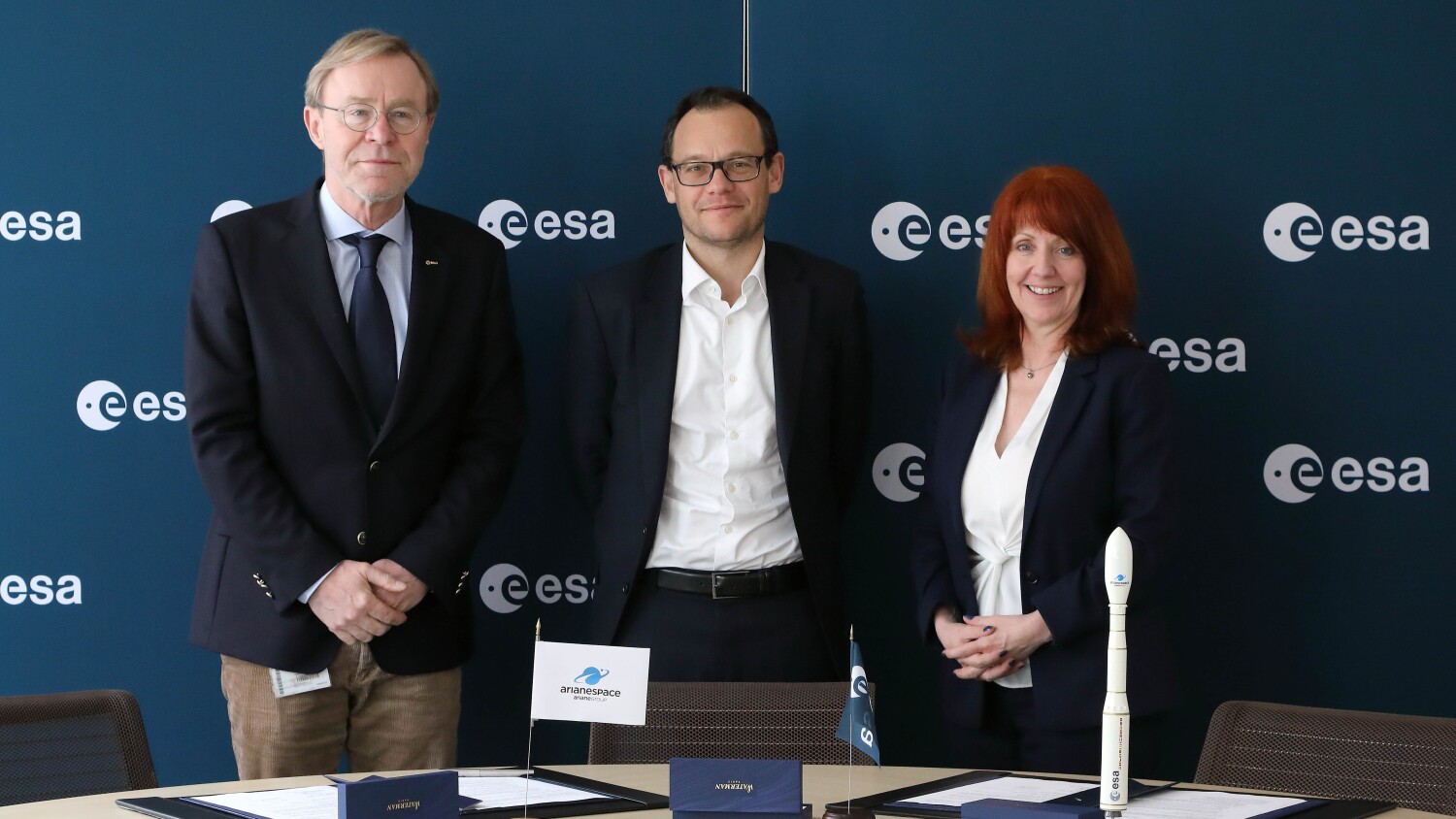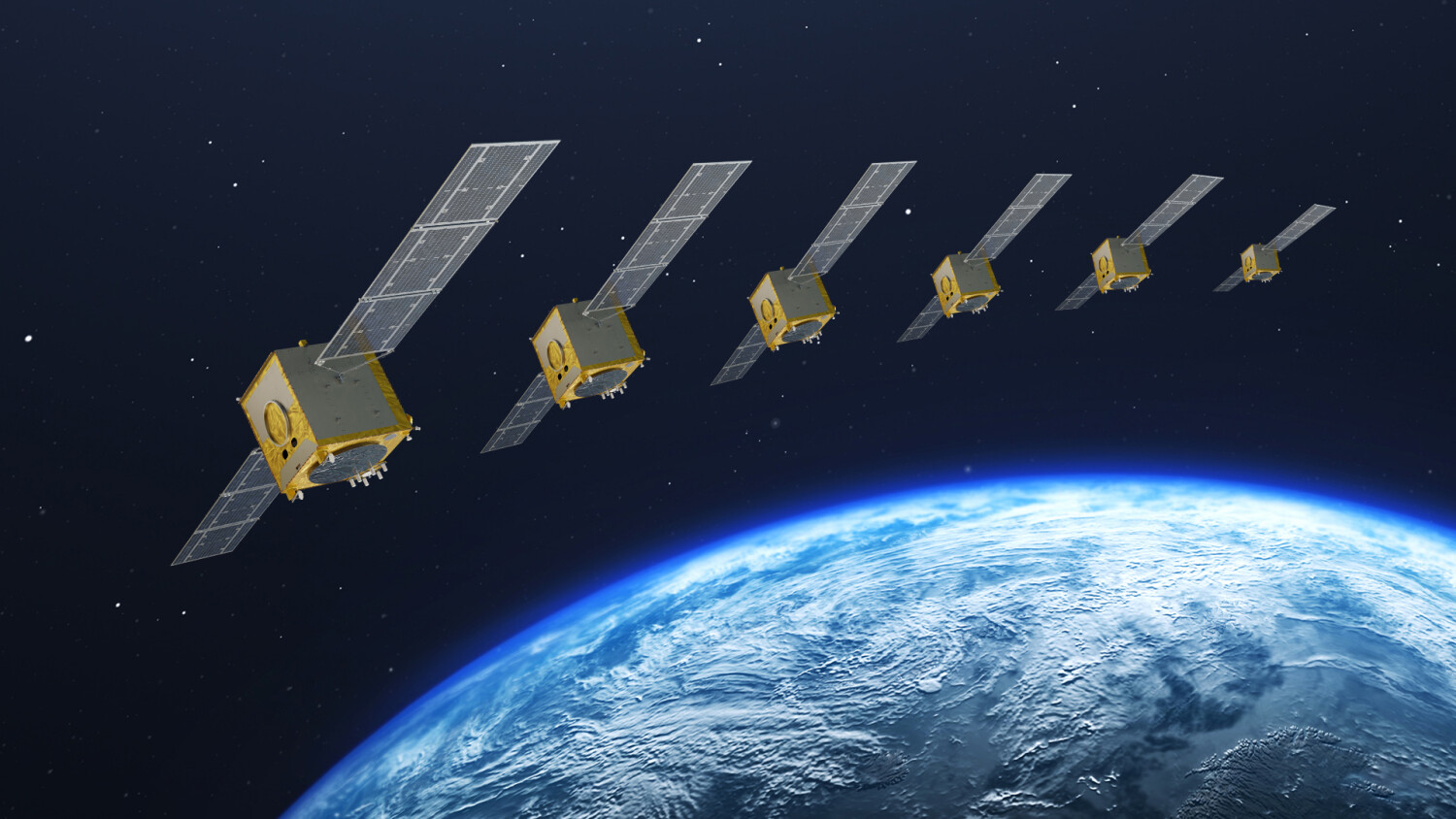Arianespace today successfully launched the European Space Agency's Rosetta probe, placing it on an Earth-escape trajectory for a rendezvous with the comet 67P/Churyumov-Gerasimenko following a ten-year trip through the solar system.
With its 14th successful mission, the standard Ariane 5G (“Generic”) launcher continues to demonstrate its technical and operational maturity. Furthermore, Ariane 5 has proven its ability to handle a complete spectrum of missions, from commercial launches into geostationary transfer orbit to scientific missions requiring special orbits.
Rosetta was placed into a hyperbolic liberation orbit – the first time an Ariane 5 has been used for this type of mission. It was able to carry out the mission thanks to the delayed ignition capability of Ariane 5’s storable propellant upper stage, allowing it to perform a 1 hour 46 minute ballistic “coast” phase that optimized the stage’s performance to place Rosetta on the correct trajectory.
Flight 158 at a glance
Flight 158 was carried out by a standard Ariane 5 “Generic” launcher from Europe’s Spaceport in Kourou, French Guiana. Liftoff was on Tuesday, March 2 at 4:17 a.m. local time in Kourou (07:17 GMT, 2:17 a.m. in Washington, DC, and 8:17 a.m in Paris).
Provisional parameters at injection of the storable propellant upper stage are:
Hyperbolic excess velocity: 3544 m/s for a target of 3545 m/s (±32)
Straight ascension: 129.39 degrees for a target of 129.38 degrees (±0.9°)
Declination: -1.982 degrees for a target of -1.980 degrees (±0.2°)
Rosetta
Built by EADS Astrium, the Rosetta spacecraft weighed 3,065 kg. at launch. It is shaped like a cube, measuring 2.8 x 2.1 x 2.0 meters; its upper part carries the instruments making up the payload, while the bottom part has the platform’s subsystems. Two solar panels, each measuring 32 square meters, will give this interplanetary probe an in-orbit span of over 34 meters.
To build up sufficient energy to reach its orbit, the spacecraft will “fly by” the Earth three times, and once by Mars, using the gravitational fields of these two planets to modify its trajectory. During its ten-year voyage, Rosetta will cross the asteroid belt twice. Because of the time needed for the voyage, the onboard instruments will be have to be placed in “hibernation” for long periods.
Maneuvers to rendezvous with the comet 67P/Churyumov-Gerasimenko are slated for May 2014. Rosetta’s primary mission is to study the core of the comet and its environment. In November 2014, a “lander” carried by the spacecraft will touch down on the comet’s surface.







